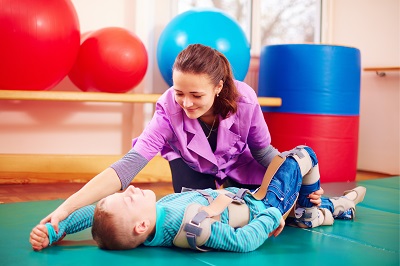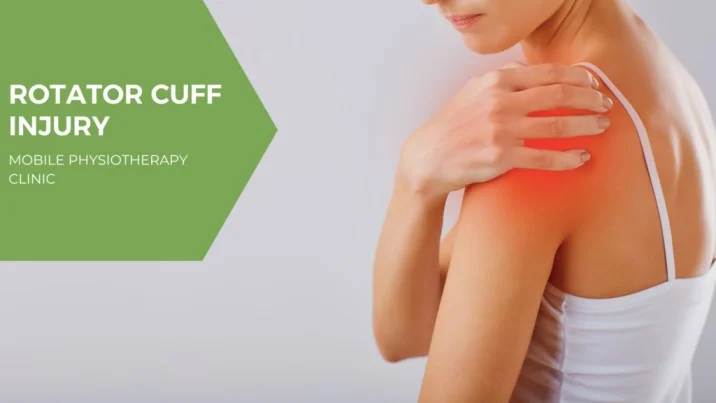Gluteal muscles exercise
Table of Contents
Introduction
- The glute muscle exercises Help to reduce chronic pain, Muscle-strengthening exercises can make a person feel stronger., Helps to increase metabolism, and, Helps to lower the risk of falls., Strong gluteal muscles are important for proper pelvic alignment, propulsion during walking and running, and even standing on one leg, and Help to improve posture.
- The glutes are the largest muscles in our body and these muscles have a very important role in our daily life. These muscles are responsible for maintaining balance and power when you are jumping, walking, or running. Most people want to strengthen their glutes or buttocks for aesthetic reasons. The glutes are the primary mobilizer of the thighs and hips so when you sit, stand, jump, or stair climb, the glute muscles engaged all these functions. If you spend most of the time in a sitting position then your gluteal muscle may be weak or under-worked, weak glute muscle puts the risk of glute amnesia, in this, your glute muscle forgets how to function properly. If this muscle is not working properly, it can affect your ability to move and risk back and knee pain.”It is more important to keep your glute muscle stronger because nowadays most people are spending sedentary lifestyles due to their work environment and lifestyle choices.
- The glutes have three different muscles.
- Gluteal muscles are a group of three muscles, these are:
Gluteus Maximus: This muscle action is the hip extension and lateral rotation of the thigh, as you walk backward.
Gluteus medius: This muscle action is hip abduction, as you take steps out of the bed and balance.
Gluteus minimus: This muscle helps with walking and rotating your legs.
- Gluteal muscle exercise includes two types of exercise
- Gluteal muscle Stretching exercise
- Gluteal muscle Strengthening exercise
Best glute exercises
- Fire hydrant
- Single leg step-ups
- Bulgarian split squats
- Curtsy lunge
- Seated figure-four stretch
- Supine gluteal stretch
- Reclined Pigeon
- Recline Knee To Chest
- Knee to the opposite shoulder
- Glute bridge with band
- Kneeling Lunge Stretch
- Child’s Pose
Glute focused exercises
- Fire hydrant
- Single leg step-ups
- Lateral banded walk exercise
- Side squats
- Bulgarian split squats
- Curtsy lunge
- Seated figure-four stretch
- Standing figure-four stretch
- Supine gluteal stretch
- Seated gluteal stretch
- Downward-Facing Dog
- Pigeon Pose
- Recline Knee To Chest
- Seated twist
- Cross-legged glute stretch
- Standing side bend
- Glute bridge
- Glute bridge with band
- Seated hip abduction with resistance band
- Lizard Pose Variation
- Cow-Face Pose (Recline)
- Standing Straddle
- Rotated Low Lunge
- Kneeling Lunge Stretch
- Yogi Squat Pose
- Child’s Pose
Strengthening exercise
Health benefits by doing a glute muscle strengthening exercise.
- Helps to reduce chronic pain
- Muscle-strengthening exercises can make a person feel stronger.
- Helps to increase metabolism, and
- Helps to lower the risk of falls.
- Strong gluteal muscles are important for proper pelvic alignment, propulsion during walking and running, and even standing on one leg.
- Helps to improve posture.
- Gluteal muscles also help to support the lower back while lifting.
- Helps to prevent knee injuries.
- Help to control the movement of the pelvis, hips, legs, and trunk.
- Glute exercises can help to improve your posture.
- Glute exercises can help to develop your entire posterior chain
Here we explain the Best exercises to build a strong glute muscle.
Fire hydrant
- For this exercise, you need a resistance band or ankle weight, and you have to take a quadruped position(on your hands and knees) your knees should be touched to the ground and your hands are shoulder-width apart and directly below the shoulders.
- For the resistance, you can tie a resistance band above the knees or strap ankle weight or do both. your back should be straight and look directly towards the ground every time.
- Raise the right leg and move away from the body up to a 45-degree angle.
- Your knee should be at a 90-degree angle and try to lift your leg until aligned with your hip.
- Slowly lower your leg back to the initial position and do this on the left leg.
- Do 12 to 15 repetitions of 3 to 4 sets and then gradually increase the number of repetitions.
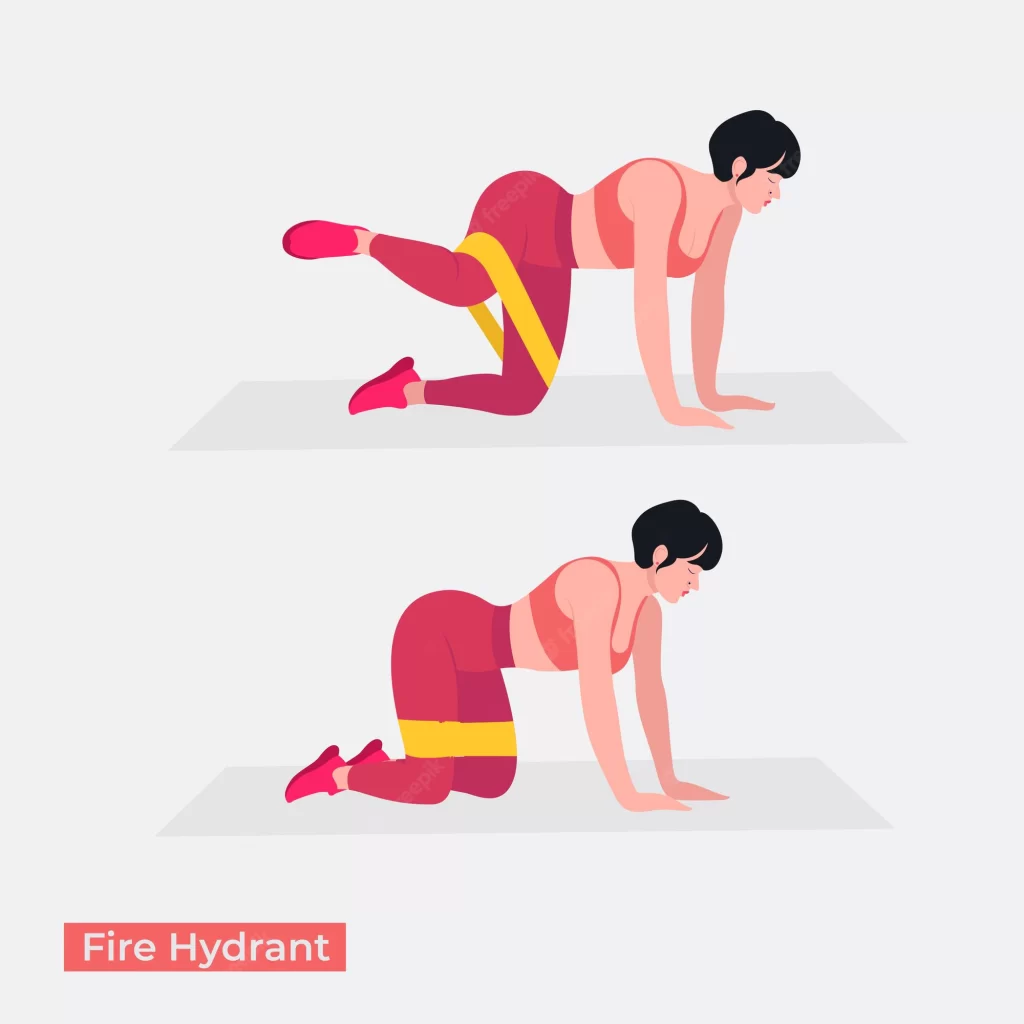
Single leg step-ups
- For this exercise, you need one bench. Now stand to adjust to a bench with your back straight, put both hands on your waist or grab two dumbbells at chest level.
- Place your right leg at a 90-degree angle and put it on the bench, your left leg should be straight and firmly planted on the floor.
- Move your body weight through the heels of your right leg and push off your left foot simultaneously. Pause for 2 to 3 seconds and hold your weight in the air up to chest level.
- Slowly return to the initial position and repeat this on another side.
- Start with 15 to 20 repetitions then gradually increase the repetitions.
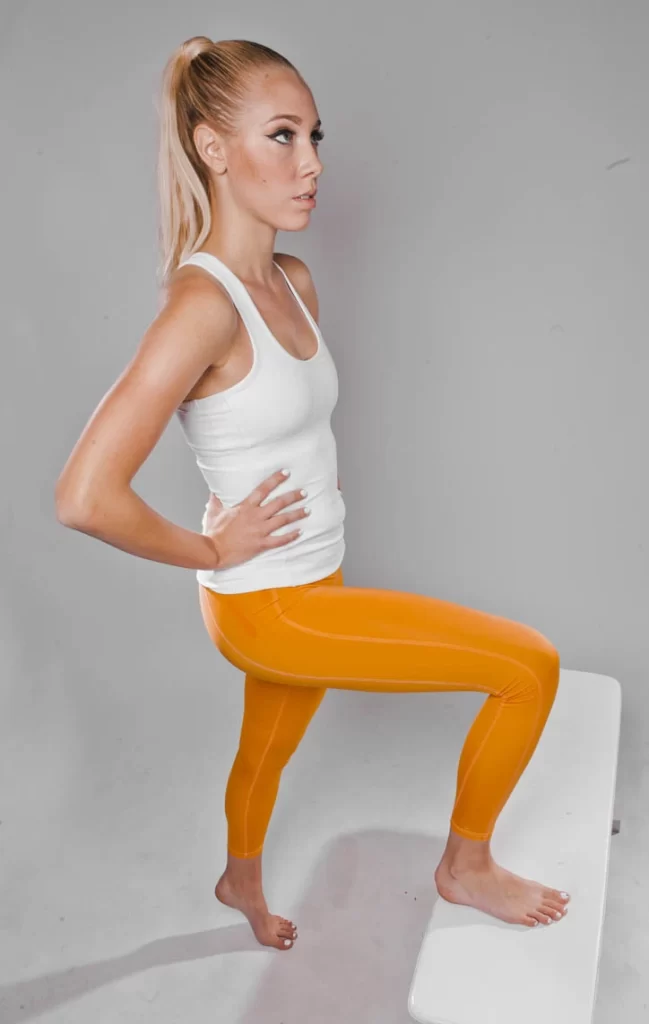
Side squats
- For this exercise, you need a resistance band or a dumbbell. you have to stand with your feet closed in a half-squatting position, and wrap a resistance band just below your both knees.
- Step a little wider than shoulder feet width apart to one side and lower your body beyond 90 degrees.
- Your back should be straight and core muscles should be engaged. you have to push back through your hips only.
- Drive through the heels to push your body back to the initial position.
- Do 12 to 17 repetitions for 2 sets on one side then move to the next side.
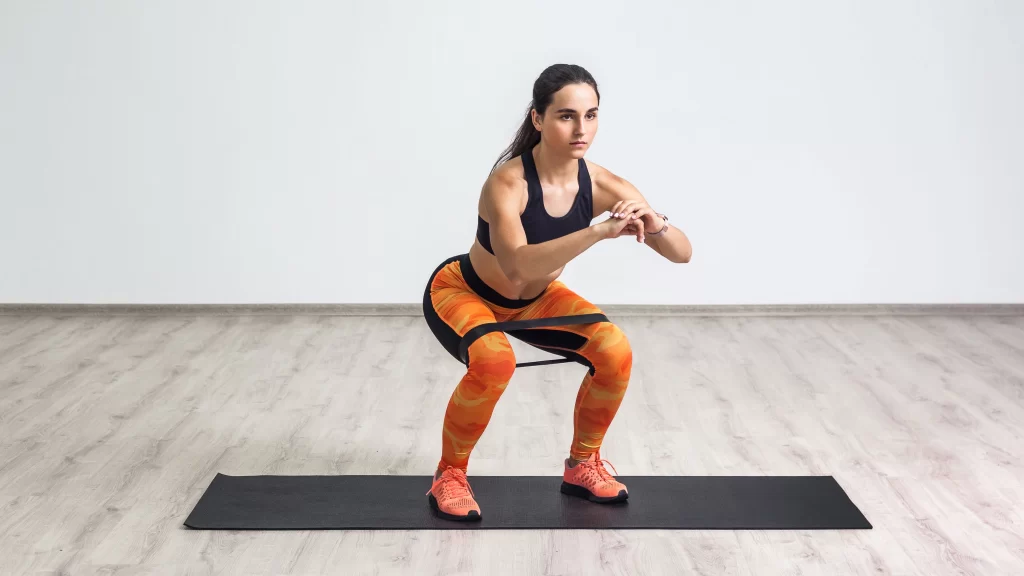
Glute bridges
- For this exercise, you need a bench and one dumbbell and lie on your back on a yoga mat over a comfortable surface.
- Your arms are extended and placed by your side with your palm face down on the floor or hold a dumbbell on your hip for more intensity.
- Lie near the bench so your legs are situated at 45 degrees when heels are on their surface.
- Raise yourself upward into a straight position by squeezing your glutes and driving your body weight through your heels.
- Hold this position for 2 to 3 seconds then slowly lower it down and return to the flat spine.
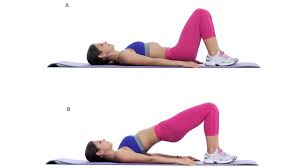
Bulgarian split squats
- For this exercise you need a dumbbell and one bench or a chair, you have to stand 3 to 4 feet away from the bench.
- To increase the intensity of exercise hold 1 or 2 dumbbells at your chest level. bring the right foot forward, position yourself at a 90-degree angle, and place your left foot on the bench behind you.
- Your trunk should be upright and core muscles engaged, flexed
- Your right leg holds for 2 seconds to lower into a squat position.
- Hold for 2 to 3 seconds then drive your body weight through your left heels to bring yourself up and back to the initial position.
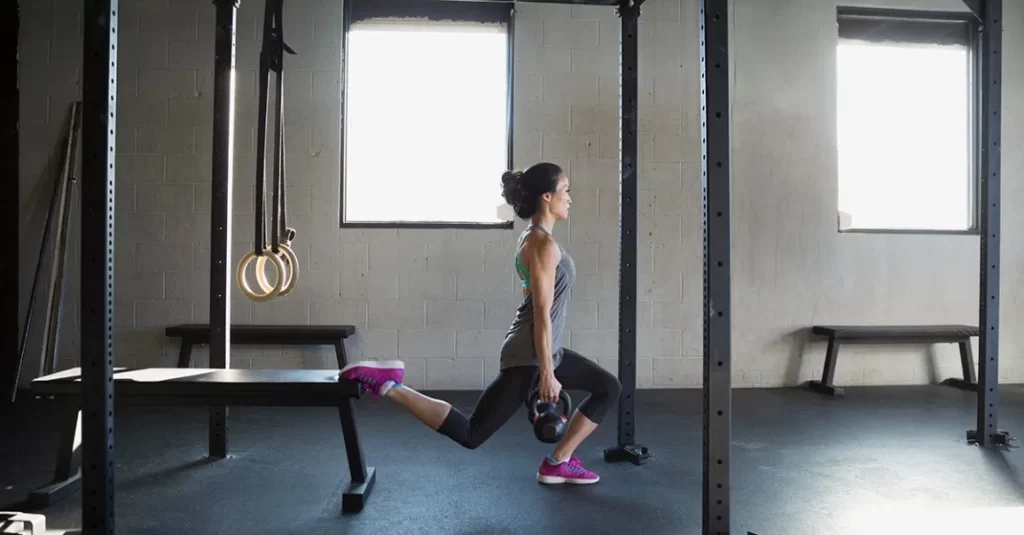
Lateral banded walk exercise
- For this exercise, you have to wrap a resistance band around your legs. just above the knees.
- if you want to add more resistance then place it below the knees. Now push your hip backward and flex your knees as you are squatting.
- your back should be straight and engage your core muscles while you move your left foot 9 to 11 inches to the left, then bring your right foot in towards it.
- then repeat it on another leg.
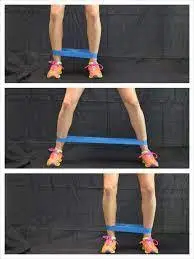
Curtsy lunge
- For this exercise, you have to stand shoulder-width apart.
- Your back should be straight and core muscle tight, bring your right leg behind and to the outside of your left foot.
- Drop your hips through your glutes until your left leg is nearly parallel to the ground, then return to the initial position.
- Do 4 repetitions on one leg then switch to another leg
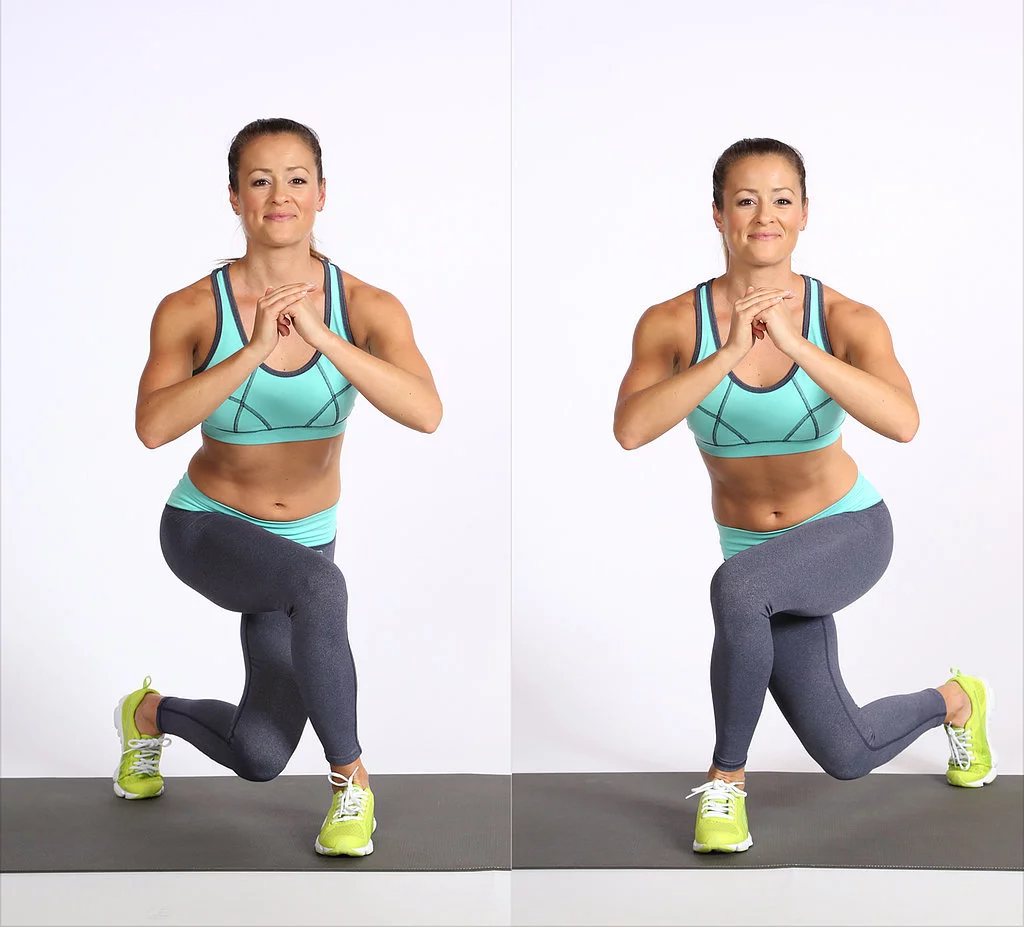
Stretching exercise
What are the benefits of doing glutes stretch?
There are many purposes for performing glute stretching exercises:
- This relieves tightness and tension in your muscles.
- Reduce discomforts, such as low back pain or tightness in your hips.
- Increase flexibility and range of motion.
- Reduce the risk of injury.
- Improve performance of physical activities.
- Improve your overall mobility.
What are the types of glutes stretch?
There are so many stretching techniques you know about:
- Seated figure-four stretch
- Standing figure-four stretch
- Supine gluteal stretch
- Seated gluteal stretch
- Downward-Facing Dog
- Pigeon Pose
- Recline Knee To Chest
- Seated twist
- Cross-legged glute stretch
- Standing side bend
- Glute bridge
- Glute bridge with band
- Seated hip abduction with resistance band
- Lizard Pose Variation
- Cow-Face Pose (Recline)
- Standing Straddle
- Rotated Low Lunge
- Kneeling Lunge Stretch
- Yogi Squat Pose
- Child’s Pose
Seated figure-four stretch
- To do this stretch: the patient is in a sitting position in a sturdy chair.
- Put your right ankle on the left thigh, just above the knee.
- Put your hands on the shins.
- Keeping your spine upright, slightly bend forward to feel a deep stretch.
- Hold for 20 seconds.
- Return to the beginning position.
- Repeat with the opposite leg.
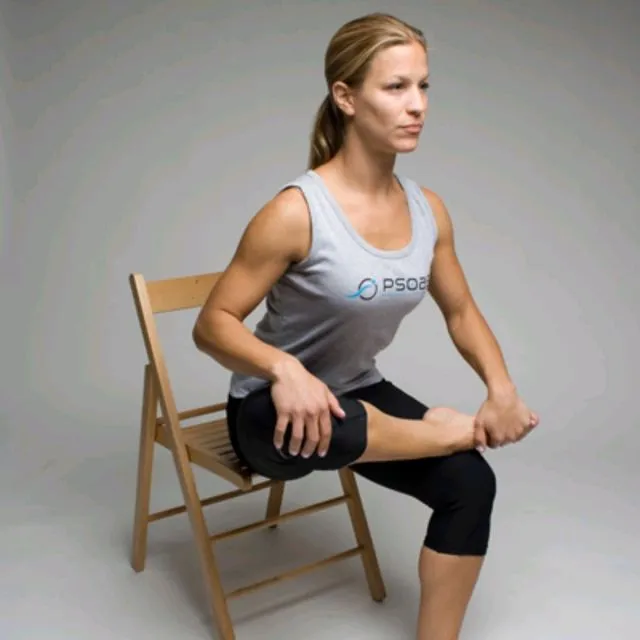
Standing figure-four stretch
- To do this stretch: The patient’s position is standing and keep your spine neutral.
- Cross your left side ankle over your right thigh, just above your knee, to make a “4” figure.
- Hold on to a table for support.
- Gently bend your right knee, moving the hips down into a squat position.
- Pause when you feel a stretch in your left side glute.
- Hold for 15 to 20 seconds.
- Return to the starting position.
- Repeat with your opposite leg.
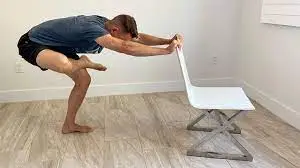
Supine gluteal stretch
- How to do it: Starting with lying flat on your back on a mat.
- Bend both knees and place your feet firmly on the mat, assuring that they are hip-width apart and the spine is neutral.
- Release and turn out your right leg so that your ankle is resting on your left leg, just above the knee.
- Move your left knee towards your upper body, resting both hands on the back of your left thigh.
- Hold this position for 15 to 30 seconds, breathing deeply continuously.
- Each time that you breathe out, draw your knee further into your chest and press your right elbow into your right knee to increase the stretch, assuring that the spine remains in a neutral position and your tailbone is on the floor.
- Repeat this stretch on the other side.
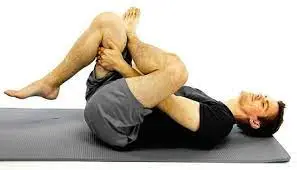
Seated gluteal stretch
- How to do it: Patient position is sitting in a chair. the spine is straight.
- Place your right foot on your left knee just above the knee.
- Now grab your right knee by your hand and draw towards your chest.
- Hold when you feel stretched.
- hold for 5 to 20 seconds then relax
- and repeat another side.
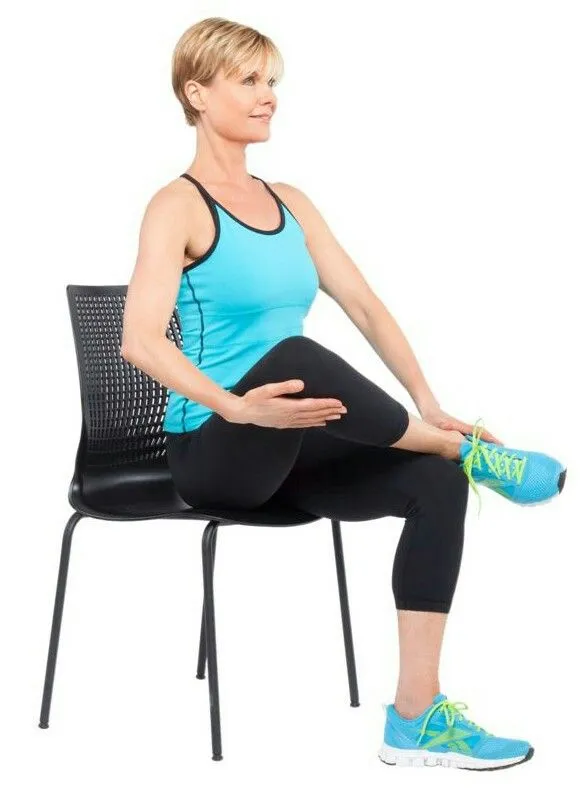
Downward-Facing Dog
- To do this stretch: Start with a push-up position, with your hands shoulder-width apart and legs together.
- Upright your body and engage your core.
- Draw your hips back and up, forming an upside-down “V” by the body.
- Gently bend your knees and put your head between the shoulders, keeping it in line with the spine.
- Reach your heels toward the floor but keep them slightly lifted.
- Hold for 15 seconds. Return to the starting position.
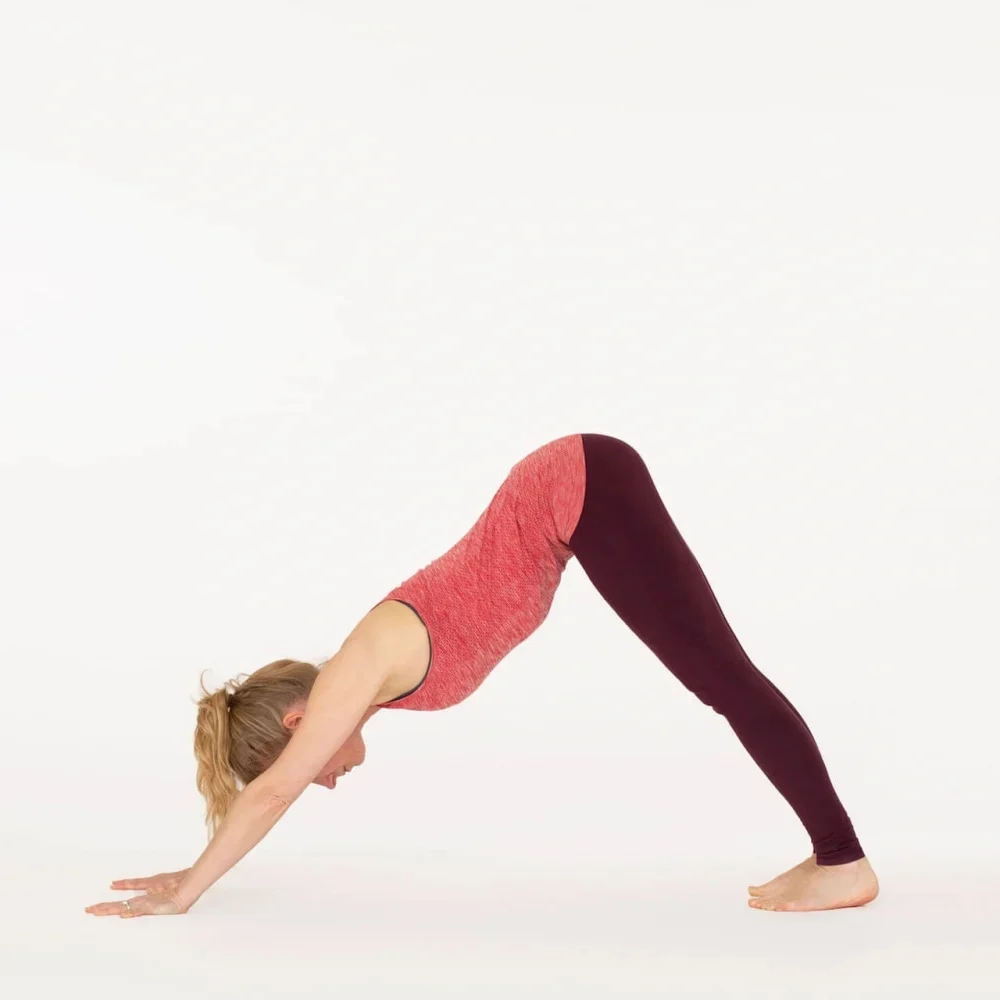
Pigeon Pose
- To do this stretch: Begin on all fours. Move your right knee toward your right wrist, placing your shin on the ground.
- Move the right ankle toward the left wrist.
- Slide your left leg back, point your toes, and keep the hips facing forward. Extend the spine.
- Slowly walk the hands forward. Hold for 5 to 10 seconds.
- Return to the starting position. Switch your legs and repeat.

This stretching has some variations :
Standing Pigeon
- To do this stretch: The patient position is standing with your feet around shoulder distance apart with your hands on your hips.
- Bend your left knee to bring it across your thigh, just above the knee of your right leg.
- Flex your left foot and rotate your left hip so your left shin is parallel to the ground.
- For deeper stretching, bend your right knee and hinge at the hips.
- Hold for 30 to 60 seconds before repeating the motion on the other side.
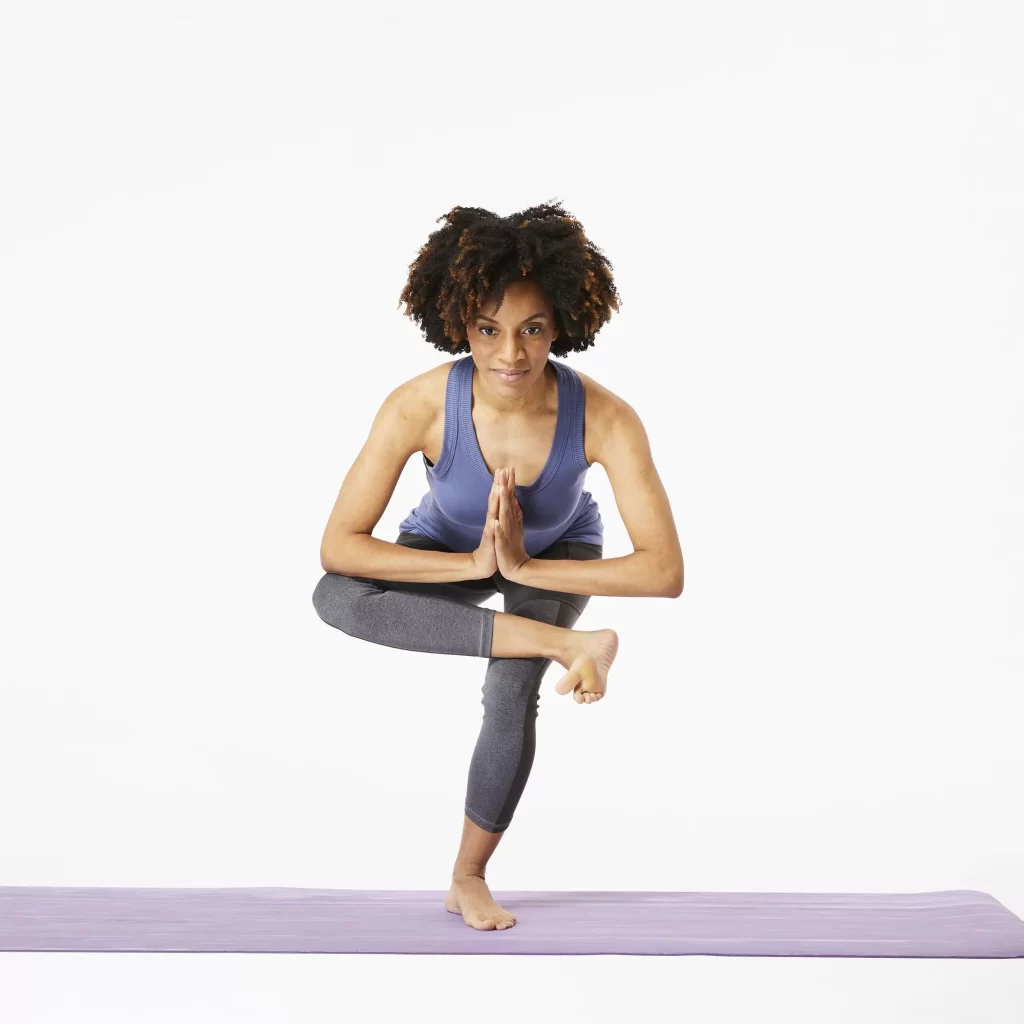
Reclined Pigeon
- To do this stretch: start by lying on the floor.
- Bend your legs and the soles of your feet flat on the floor.
- Raise your left leg to bring your left ankle to rest on your right thigh, just above your knee.
- Flex your left foot and wrap your arms around your right thigh, slowly pulling it closer to your chest as you press your left knee away from your body.
- Hold for 30 to 60 seconds before repeating on the other side of the leg.
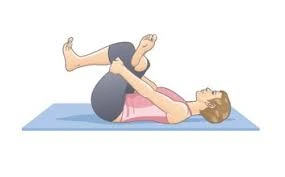
Modified Pigeon
- To do this stretch: Sit on the floor with your legs straight out in front of you and hands-on on either side of the hips. Then, flex your right foot, bend your right knee, and bring your shin towards the body, maintaining it as perpendicular to your thigh as you can.
- Simultaneously swing your left leg behind you and bend it slowly.
- Slowly press into the tips of your fingers for balance.
- Hold for 30 to 60 seconds before repeating the motion on the opposite side.
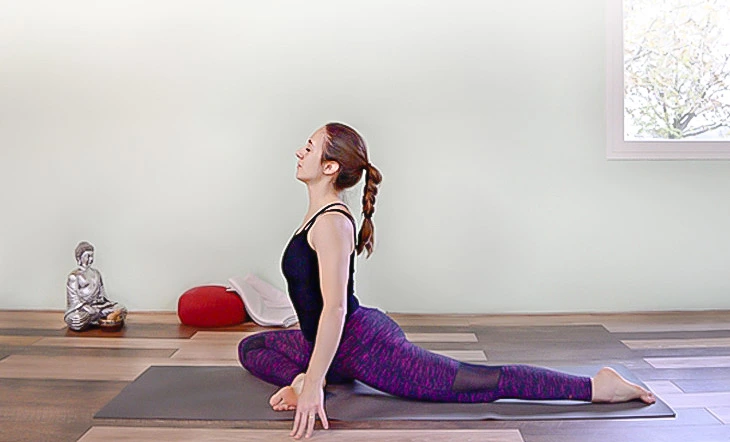
Elevated Pigeon
- To do this stretch: Position is Standing as close to a table as you can.
- Lift the left leg with the knee bending.
- So, your leg forms a 90-degree angle, and rest your left knee and ankle on the table in front of you.
- So, the knee and ankle rest parallel to the edge of the table in front of you.
- Bend forward towards the shin as much as comfortable for you.
- When you feel stretched, hold there for 30 to 60 seconds and switch the legs.
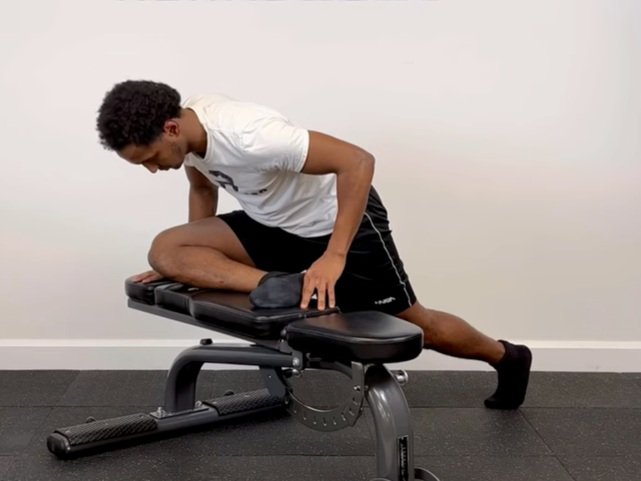
Recline Knee To Chest
- To do this stretch: Start by lying on the back with your legs straight.
- Bend your left knee and wrap your arms around the shin.
- Gently pull the knee by your hands towards your chest.
- Hold for 60 to 120 seconds, then repeat the motion on the right side.
- Repeat 2 times.
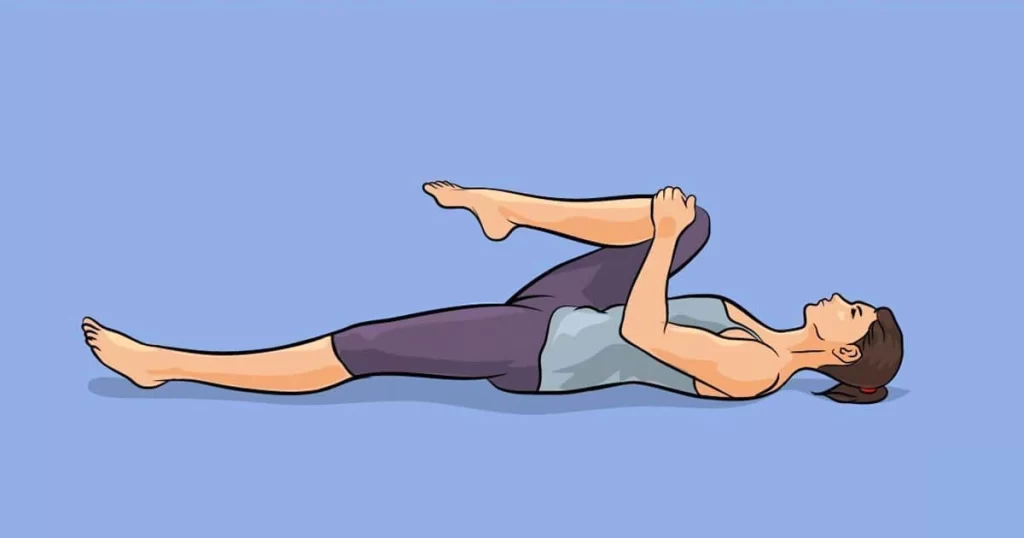
Knee to the opposite shoulder
- To do this stretch: Start by taking a supine lying position on a mat and straightening your legs in front of you.
- Bend and lift your right knee and put your hands around your right knee.
- Pull your right knee up toward the left shoulder.
- Hold for 15 to 30 seconds.
- then return your right leg to the initial position.
- Straighten your right leg and repeat with your other leg.
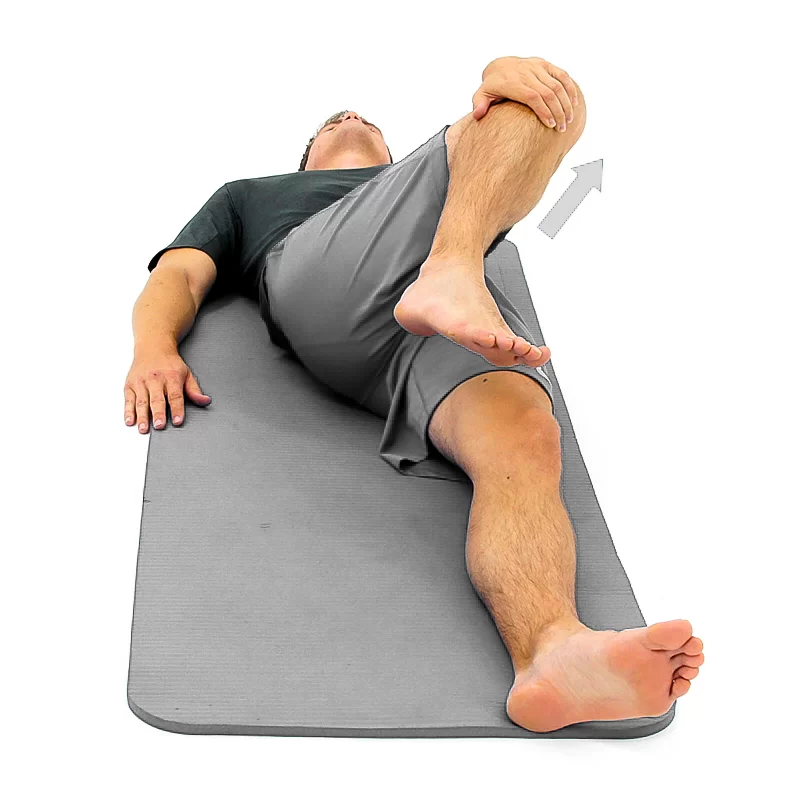
Seated twist
- To do this stretch: Sit on the floor and stretch your legs forward.
- Place your left arm behind you and bring your left leg over your right one.
- Place your left foot on the ground near your right knee.
- Position your right arm over your left knee, with the palm facing outward.
- Twist to the right and use your right arm to pull your left knee inward.
- Hold for 15 to 30 seconds.
- Untwist and repeat on the opposite side of the leg.
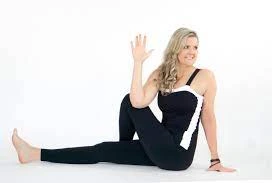
Standing side bend
- To do this stretch: This stretching exercise will also stretch out your upper body.
- Use the wall for support and balance, and take a standing position with one side of the body towards a wall.
- Now cross your leg afar from the wall in front of your other leg.
- Place one palm on the wall and the other on the hip.
- Then bend your body away from the wall, and push your hip toward the wall.
- Hold for 15 to 20 seconds before repeating on the opposite side.
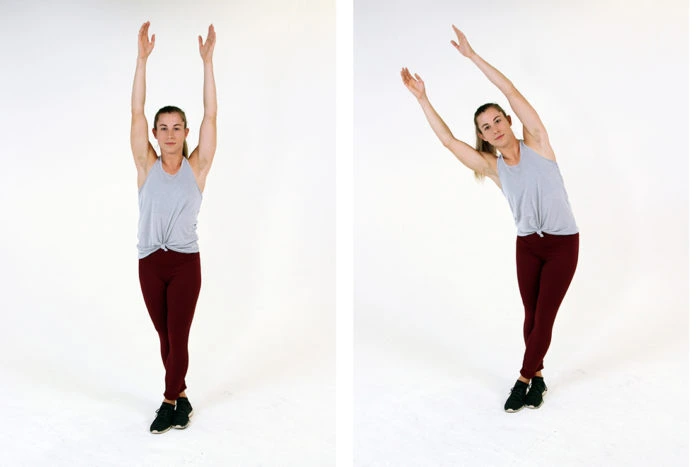
Glute bridge
- To do this stretch: Take a lying position on your back with your knees bent and your feet flat on the floor.
- Put your feet hip-width distance apart and gently contract the core muscles.
- Slowly breathe out while maintaining your core contracted and then raise your hips up and off the floor.
- Slowly contract your glute muscle and don’t raise your hips past the point of comfort.
- Hold for 10 to 15 seconds, inhale, and gently lower yourself back to your beginning position.
- Repeat 5 to 8 times.
Glute bridge with band
- To do this stretch: Tie up a small, tight resistance band around your calve muscle.
- Take a supine position on your back and raise your hips up.
- Maintain tension in the resistance band and tap the hips down to the floor before lifting them back up again.
- It is important to keep your spine straight and make the motion come from the hips.
- Repeat 10 to 15 times.
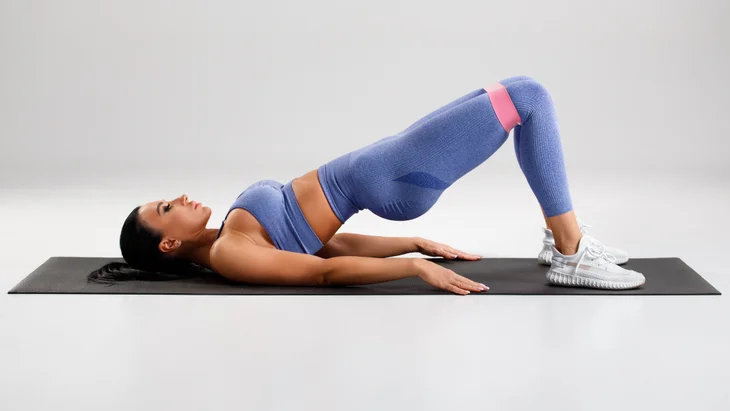
Seated hip abduction with resistance band
- To do this stretch: Sit on the floor and tie up the resistance band around the calve muscle.
- Flex your knees and maintain your feet on the floor.
- Put the hands behind you slightly.
- Keep the back straight and press the legs out to the sides as you rotate the hip externally.
- Gently, and with control, bring the legs back together. Holding time should be 10 to 15 seconds.
- Repeat 8 to 10 times.
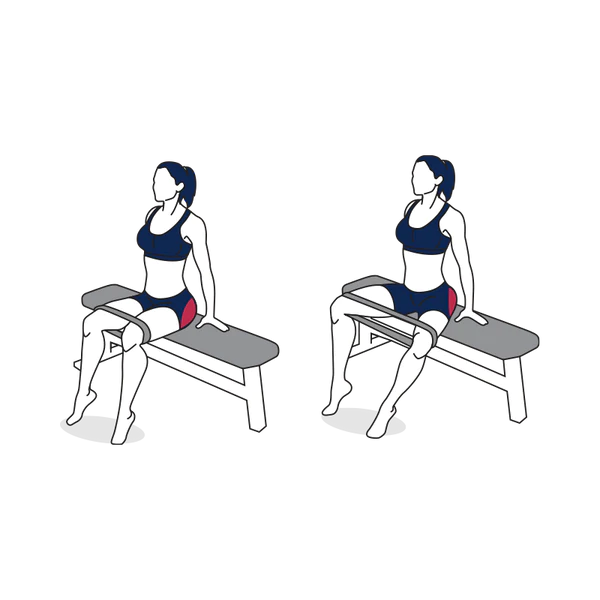
Lizard Pose Variation
- To do this stretch: start in a high plank position with your hands directly under the shoulders.
- Bend your right knee to bring your right foot outside of your right hand, assuring your right knee is in line with your right ankle.
- Rest your left knee on the floor.
- Press your right foot into the floor and gently push your right knee outward.
- To feel a deep stretch, lower your forearms to the floor.
- Hold for 60 to 120 seconds before repeating the motion on the opposite side.
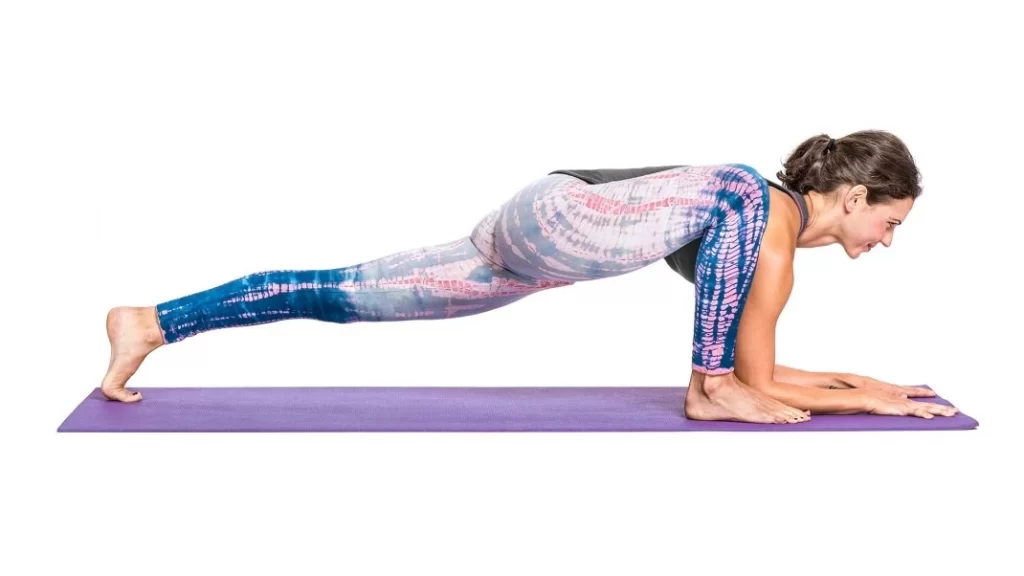
Cow-Face Pose (Recline)
- To do this stretch: Start by lying on your back and the legs bent.
- The soles of your feet are flat on the ground. Cross your right thigh over your left one.
- Maintaining your head on the mat, use your hands to slowly pull your shins up toward your chest.
- Bring your shins perpendicular to your upper body as possible.
- Hold for 60 to 120 seconds before repeating the motion with your left thigh over your right.
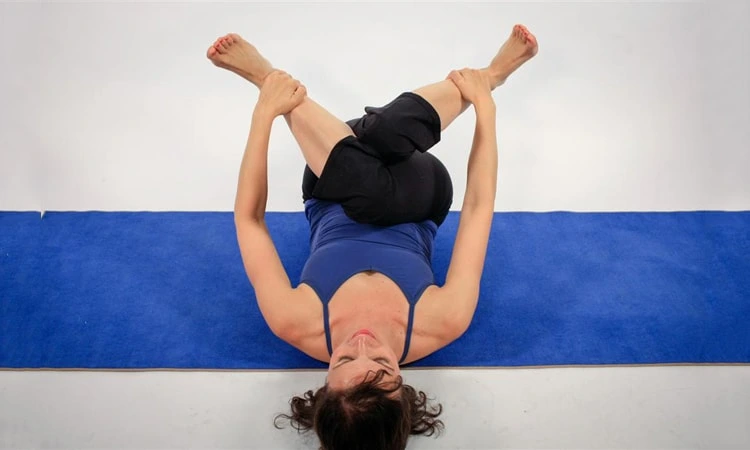
Standing Straddle
- To do this stretch: Start with your feet 2 to 3 feet apart with the toes angled slightly inward.
- Bend forward at waist level and walk your hands to your right ankle.
- Hold for 30 to 60 seconds before walking your hands to your left ankle.
- Repeat 3 to 4 times.
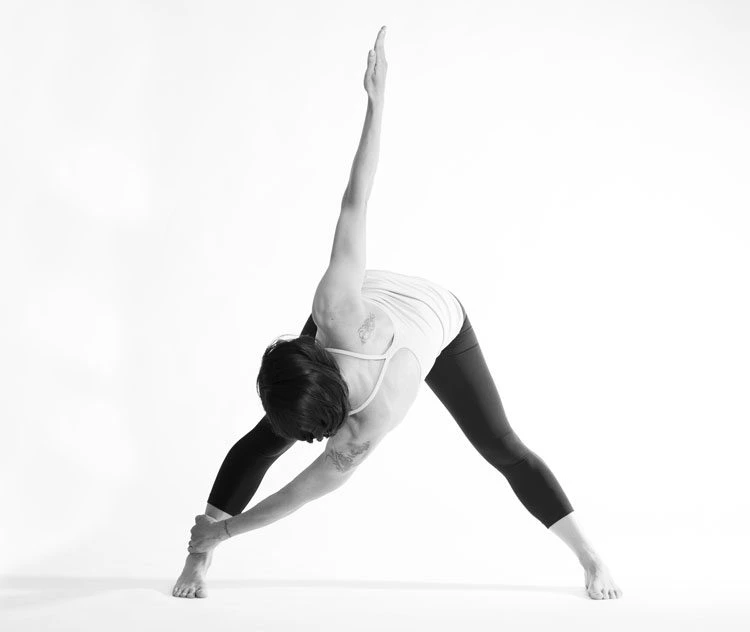
Rotated Low Lunge
- To do this stretch: start in a high plank position with your hands directly under the shoulders.
- Flex your left knee to bring the left foot outside of the left hand, assuring your left knee is in line with the left ankle.
- Lift your left arm toward the roof, rotating your chest towards your left knee.
- Look over your left shoulder toward the roof.
- So your body forms a straight line from your head to your right heel.
- Hold for 60 to 120 before repeating the motion on the other side.
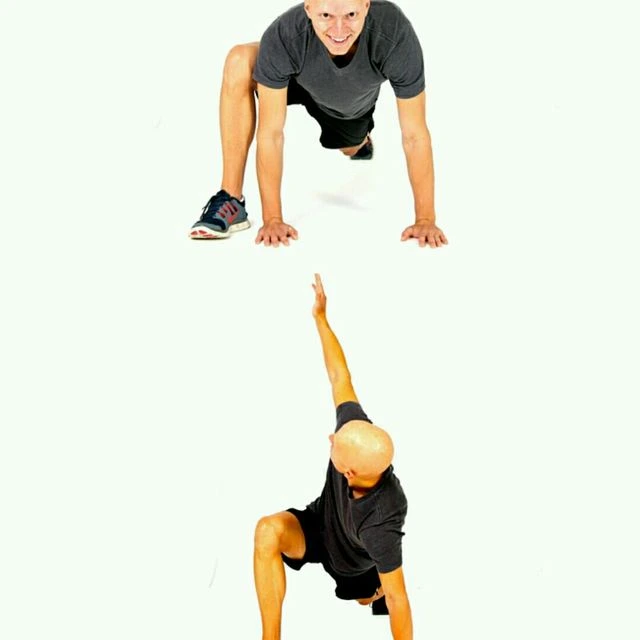
Kneeling Lunge Stretch
- To do this stretch: Lower into a kneeling lunge with your right knee on the floor and your left foot planted in front of you.
- Put your hands on your hips and gently push your left hip towards your left foot.
- Hold the position for 20 to 30 seconds, change sides, and repeat.
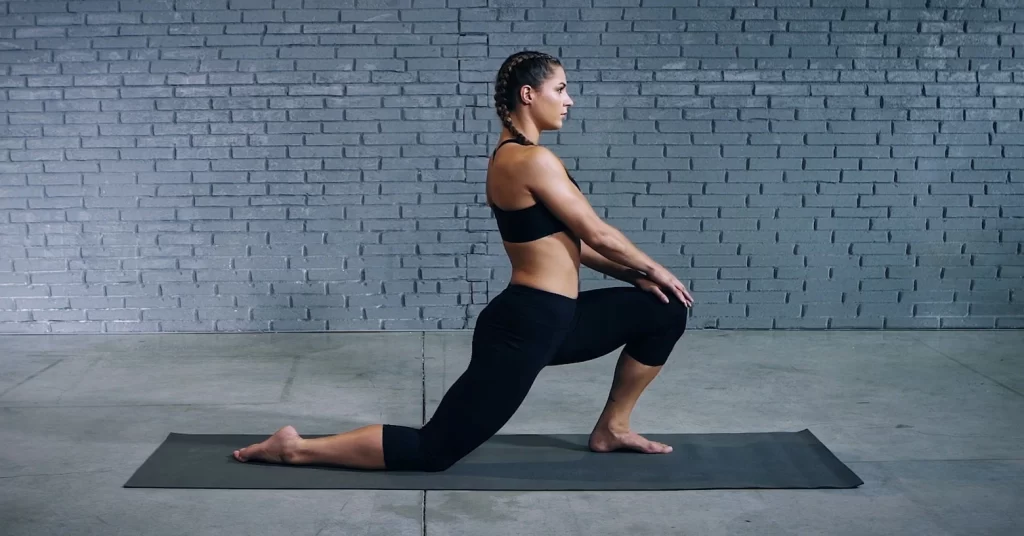
Yogi Squat Pose
- To do this stretch: Position is standing with the feet wider than hip-width apart, toes facing either forward or slightly outwards.
- Bend your knees and squat down as much as possible so that the hips come below the knees.
- Try to maintain your back as straight and upright as possible, pressing the hands together and elbows against the insides of your knees for assistance.
- Hold for 10 to 15 seconds and repeat.

Child’s Pose
- To do this stretch: Start on your hands and knees, with your knees placed out wider than the hips.
- Sit back on the heels so the stomach lowers between your thighs.
- Slowly bend forward as possible.
- Keep your upper body straight as you continue to press the hips back and the arms forward.
- If comfortable, put your forehead on the floor.
- Hold the position for around 20 to 30 seconds and repeat.

What are the common mistakes done during stretching?
There are certain mistakes you shouldn’t make during stretch:
- Not Warming Up Before Stretching
- Stretching after warm-up motions decreases the risk of injury by giving unexpected flexibility to your muscle. Never perform stretching without a prior warm-up period unless you feel pain in your muscles.
- Not Stretching At All
- Always perform stretching before any exercise workout which helps your muscles to activate and take a load into them. Without any muscle stretching, you put your muscles in danger or it may tear your muscles because of sudden weight loading into them.
- Not Stretching For Enough Time
- You have to stretch your muscles for enough time, every stretch requires a different amount of time. Static stretching should be around 30 – seconds, dynamic stretching is required 10-12 repetitions.
- Forgetting to Breathe
- Don’t forget to breathe during the stretch, because you need more oxygen during the stretch. So make sure you continue your breathing while performing a stretch.
- Stretching Into An Injury
- If you are injured, you have to avoid stretching through that injury pain. Stretching makes your muscles suffer and causes lots of pain, so make sure to not stretch any injured area.
- Stretching Until It Hurts
- Don’t stretch your muscles until you feel pain. Stretching should be in a mild painful manner that is a little forced at the end of the stretch. So much pain during a stretch makes your muscles injured and damaged. Overstretching is dangerous for you.
Best glute exercises at home
- Fire hydrant
- Single leg step-ups
- Lateral banded walk exercise
- Side squats
- Bulgarian split squats
- Curtsy lunge
- Seated figure-four stretch
- Supine gluteal stretch
- Seated gluteal stretch
- Downward-Facing Dog
- Pigeon Pose
- Recline Knee To Chest
- Seated twist
- Cross-legged glute stretch
- Standing side bend
- Glute bridge
- Lizard Pose Variation
- Cow-Face Pose (Recline)
- Standing Straddle
- Rotated Low Lunge
- Kneeling Lunge Stretch
- Yogi Squat Pose
- Child’s Pose
Bodybuilding of the gluteal muscles
Bulgarian split squats
- For this exercise you need a dumbbell and one bench or a chair, you have to stand 3 to 4 feet away from the bench.
- To increase the intensity of exercise hold 1 or 2 dumbbells at your chest level. bring the right foot forward, position yourself at a 90-degree angle, and place your left foot on the bench behind you.
- Your trunk should be upright and core muscles engaged, flexed
- Your right leg holds for 2 seconds to lower into a squat position.
- Hold for 2 to 3 seconds then drive your body weight through your left heels to bring yourself up and back to the initial position.

Stiff-Leg Deadlift
The stiff leg deadlift is an isolation movement that explicitly targets hip flexion and extension, and can be performed by all athletes to improve muscle strength, hypertrophy, and neuromuscular control of the muscles get involved in powerful and explosive movements.
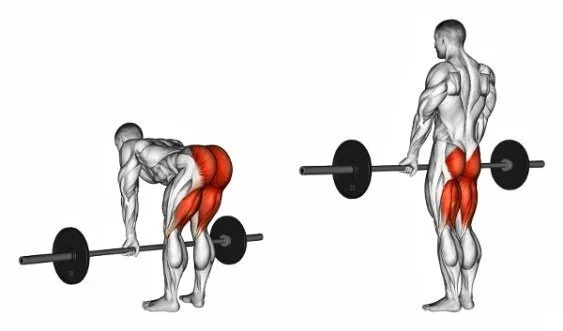
landmine deadlift with band resistance
Landmine deadlifts with band resistance are one of the most effective strength-training exercises to improve jump performance. This exercise is used primarily to target the muscles of the glutes and hamstrings.
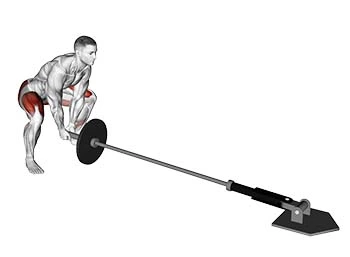
Gluteus Maximus exercises
- Barbell glute bridge
- Split squat
- Barbell squat
- Step up
- Hip extension
- Lunge
- Gluteal kickback
Gluteus minimus exercises
- Curtsy Lunges
- Fire Hydrants
- Glute Bridges
- Clamshells
- Side-Lying Hip Abduction
- Single-Leg Squats
- Side Plank Hip Dips
Exercises of glutes for female
- Fire hydrant
- Single leg step-ups
- Bulgarian split squats
- Curtsy lunge
- Gluteal bridge
- Squat
- Step up
- Dokey kick
- Reverse lunge
Best glute exercises for men
- Barbell glute bridge
- Squat
- Barbell squat
- Split squat
- Kettlebell swing
- Step up
- Hip extension
- Goblet squat
- Single leg deadlift
- Deadlift
- Front barbell squat
- Romanian deadlift
- Glutes kickback
Best glute exercises with weights
- Glute bridge.
- Jumping squats.
- Walking lunge.
- Single-leg deadlift.
- Clamshell.
- Banded side step.
- Squat
Best glute exercises gym
- Squat
- Barbell glute bridge
- Glute bridge
- Step up
- Split squat
- Glutes kickback
- Barbell Squat
- Curtsy lunge
FAQ
Lunges are the favorite gluteal muscle exercise. In a staggered stance, you really have to use your glute muscles to stabilize your body. The stance also forces the glute muscles on the front of your legs to work even harder. 2 Lunges also work other muscles including your hamstrings, quads, and calves muscles.
The three exercises to strengthen your gluteus maximus are the Step-ups, Squats, and Lunges. For the step-up exercise, you need one bench. Now stand to adjust to a bench with your back straight, put both hands on your waist or grab two dumbbells at chest level. Place your right leg at a 90-degree angle and put it on the bench, your left leg should be straight and firmly planted on the floor. Move your body weight through the heels of your right leg and push off your left foot simultaneously. Pause for 2 to 3 seconds and hold your weight in the air up to chest level. Slowly return to the initial position and repeat this on another side. Start with 15 to 20 repetitions then gradually increase the repetitions.
In a study by the American Council on Exercise, it was found that squatting is the number one, most beneficial exercise for building gluteal muscle strength. The major target of the squat is the gluteus Maximus muscles, the largest of the four gluteal muscles.
Squat, Lunge, Donkey Kick, Step-Up, Hip Thrust, Bulgarian Split Squat, and Romanian Deadlift are the exercise to build the glutes muscles fastest.
Exercises that strengthen the glute Maximus include squats, lunges, deadlifts, donkey kicks, glute bridges, glute/ham raises, and hip thrusters. The gluteus medius and minimus can be seen as the side glutes or lateral glutes as they sit more to the side of the pelvis than the gluteus maximus muscle.
Regular walking does work your glute muscles along with your hamstrings, quads, calves, and core, but certain tweaks to your form or technique can give your glute muscles some extra love.


